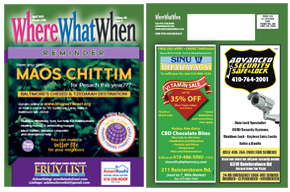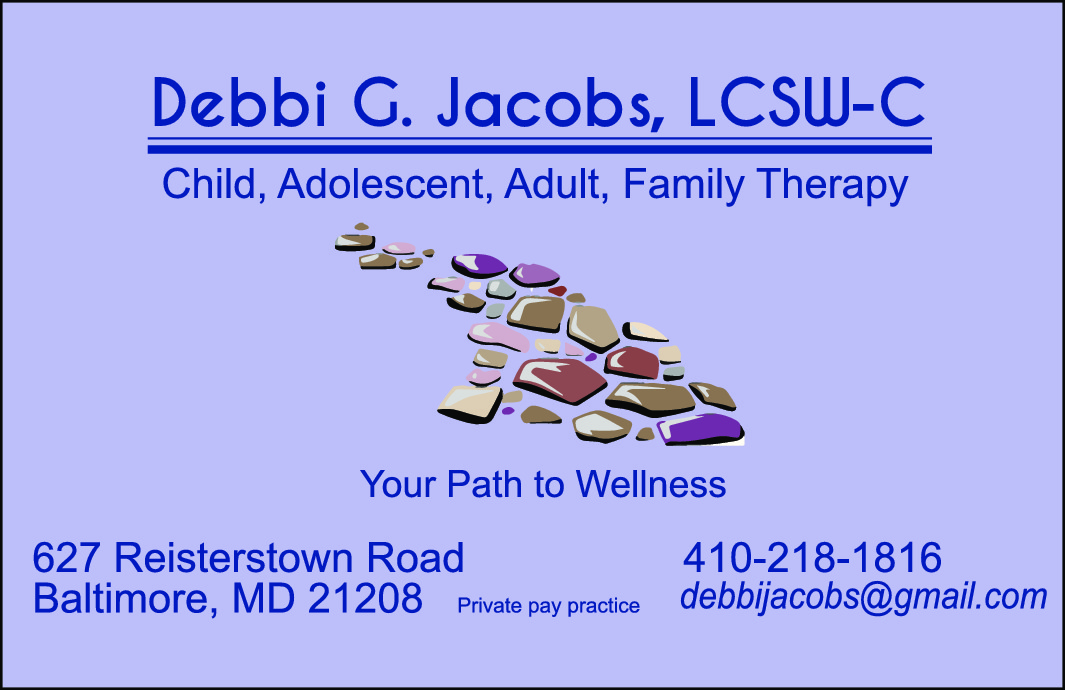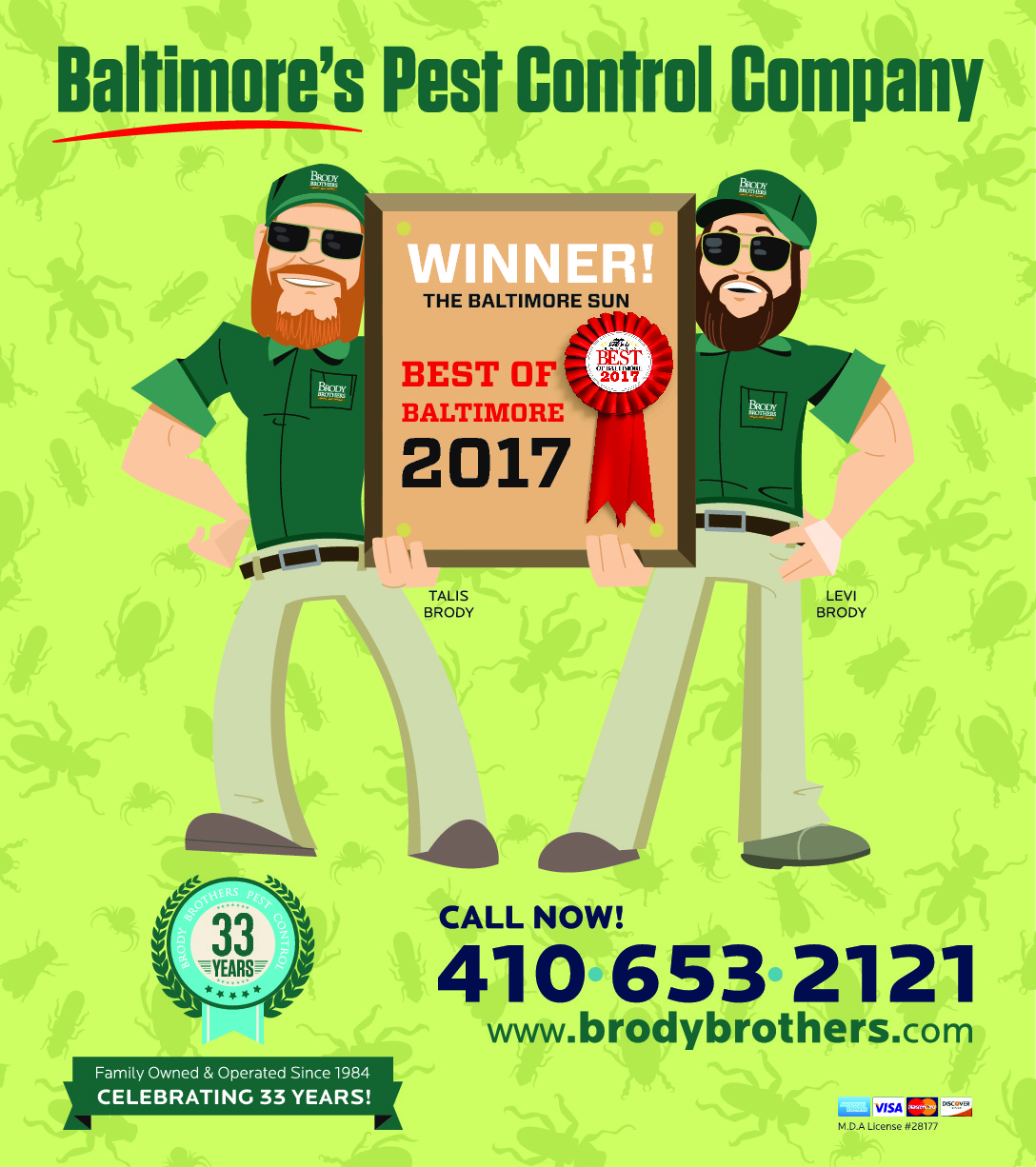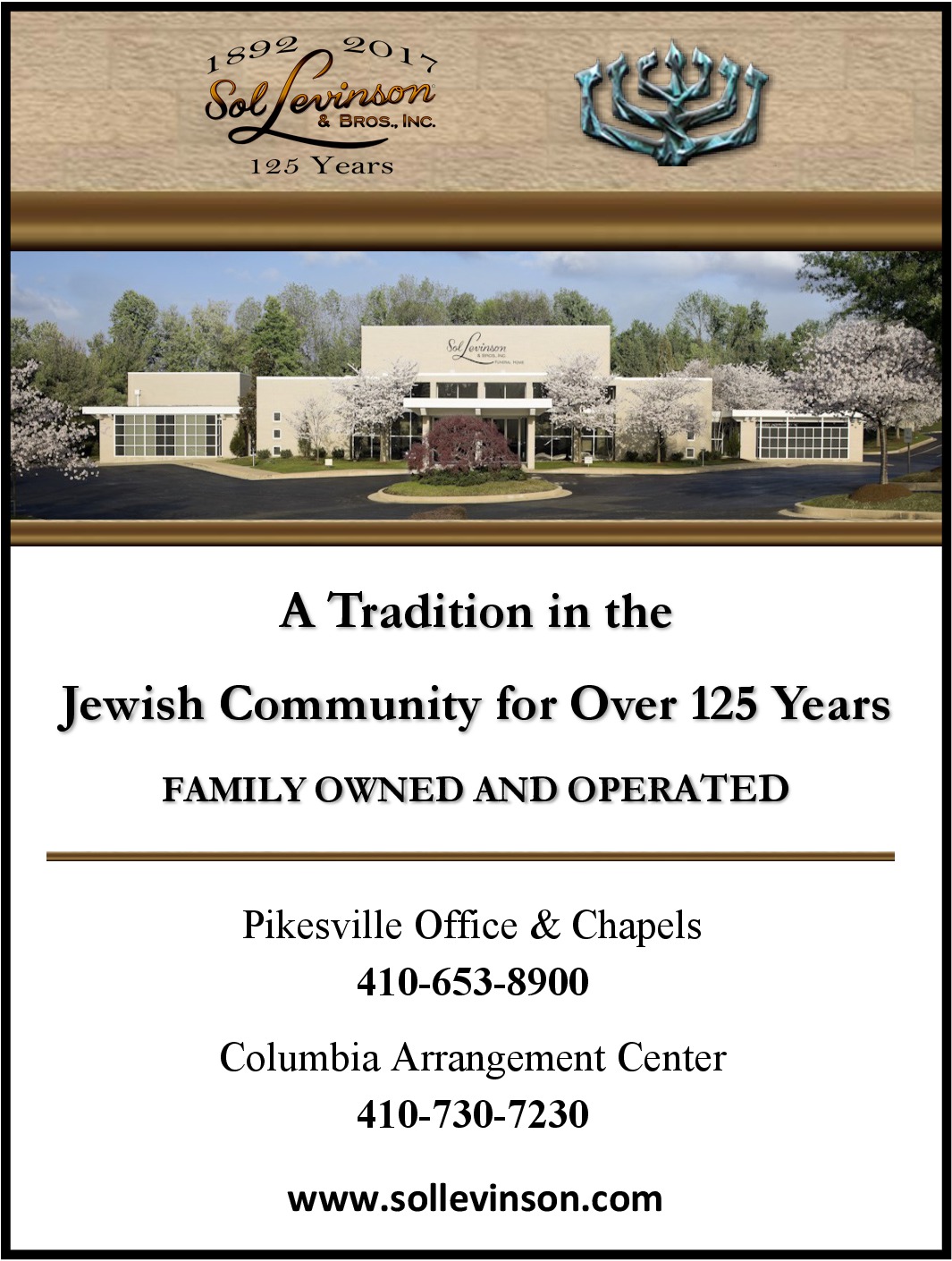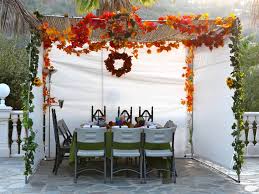
Sukkos Sixty Years Ago
by Raphael Blumberg
In 1958, my family moved to Baltimore from Philadelphia. I was three. Until 1964, we lived on the 4800 block of Palmer Avenue, in Lower Park Heights. That neighborhood had many Jews but was not intensely Jewish. The Jews who lived there were elderly Litvaks with Yiddish accents. We davened at Rabbi Sadofsky’s shul, which was in a converted home. I remember a sukkah in the backyard of the shul, and I remember a kiddush in that sukkah after davening, where I crawled around under the table to steal half-eaten kichel off the old men’s plates. Another thing I recall from that time of year was public auctions for aliyos being held in Yiddish. I didn’t know Yiddish back then, but I did pick up the word “tzvawnzig (20).”
We had a sukkah in our backyard, which my father had been piecing together by himself since his marriage. I will never forget the decorations. These included such items as Indian corn, uncooked cranberries strung up on strings, hollow gourds, and pomegranates. During my married life, we never tried to do any of that, making due with pictures and paper decorations, but the variety of colors was dazzling. I could stare at those fruits for hours.
I don’t remember ever seeing any other sukkah in that neighborhood. My best friend was not Jewish. We only wore yarmulkes at home, when we davened or ate. We stayed on Palmer Avenue until 1964, when my parents purchased a home on Glen Avenue. Our religious lives changed drastically after that.
On Glen Avenue, everyone was Jewish, and many people were Orthodox. The kids all went to TA and wore yarmulkes all the time. This was new to me, but I quickly adapted, and later switched to TA myself before sixth grade. I suddenly had lots of religious friends, and their eyes were open to see how we did things. Thus, my father's homemade sukkah soon gave way to a prefab version, whose walls were more both easier to put up and halachically less flimsy. My parents and many others were also starting to replace their heavy pine branches with bamboo schach.
On Glen Avenue in 1964, most sukkahs, as I recall, were made of cloth, and unheated. There was one wealthy man in the neighborhood with a heated, wooden sukkah, and it stood out.
I remember that you didn’t pick and choose your lulav. The shul gabbai would choose your lulav for you, and you would take what you got. Also, all the esrogim had pitoms, something I have never seen in Israel.
Our new neighborhood was replete with sukkahs. The best thing about being a kid there was “sukkah-hopping.” Kids would go around in groups, seeing how many sukkahs they could step into, and they would keep a count. For some children, this was a sort of competition. An experienced, older child could bring his group to over a hundred sukkahs by the end of the afternoon or by Mincha time.
Some families would leave candies on the table, and some children would go around with paper bags, putting a candy from each sukkah into their bag. In some sukkahs, you would encounter the owner sitting there learning Torah or sleeping. This sometimes led to “farhers,” Torah and holiday quizzes, administered by the sukkah owner. Most of the men in 1964 did not sleep in their sukkah. It was just too cold. In Israel, of course, the situation is different. I am curious to know if that has changed in Baltimore since then.
One other special practice I was particularly fond of was Chazan Baum’s march tune for Vayedaber and Kaddish just before Shemoneh Esreh on Yom Tov night at Shearith Israel. I haven’t heard that in over 35 years, and I miss it!
Raphael Blumberg lives in Kiryat Arba.
Those Were the Days
by Eli W, Schlossberg
Back in the day, in the mid-1950s, when I was four or five years old, we lived on 2216 Linden, off North Avenue, and we attended the old Shearith Israel on McCullough Street. In our small backyard, we had a sukkah assembled of many old doors that were tightly connected by metal hinges, door unto door. My mom would gather tree branches for schach. We decorated the sukkah by hanging real fruits. We also hung a Jewish star my grandfather made back in Germany.
The Jewish star was covered with tin foil and with garlands of cranberries that we strung every year on Motzei Yom Kippur. Our family minhag (custom) was to have a Sukkos party right after the Yom Kippur fast to make decorations for Sukkos. The party was open to all our friends and neighbors to start the new year with a mitzva.
In 1958, we moved uptown to Jonquil Avenue, and my parents purchased a small prefab pole-and-canvas sukkah sold under the hechsher of the OU. The yellow-and-blue canvas was imprinted with Kiddush and the Ushpizen. (Sixty-one years later, the Kiddush and Ushpizen decoration is sew onto our present-day Sukkah canvas.) The Jewish star came with us, and a bulb in the middle of the sukkah provided light. Mr. Leo Storch would donate schach from forest land he owned to Bais Yaakov, which sold the pine branches as a fundraising project. The three Gutman boys – Manny, a”h, Josh, a”h, and Abe, may he be well – delivered the schach on their family’s farm truck. There were no woven mats back then, but in the 70s, bamboo poles became available and began to replace the pine branches.
Each family, if they could afford it, purchased one set of luluv and esrog, and all the esrogim I remember had a pitom. On the Greenspring campus of Bais Yaakov they grew aravos. Rabbi Diskind of Bais Yaakov had an esrog tree in the Druid Hill Park conservatory, and in the 1970s, my mom grew an esrog tree in our home that gave us three or four esrogim a year. In later years, they were carefully checked by Rabbi Hopfer. As a child, I would bring our lulav and esrog each day of Chol Hamoed to the Berman family, who lived on our block, as their elderly grandmother wanted to bensch lulav.
As children we would visit sukkahs all around the neighborhood. One memorable sukkah was that of Harav Mendel Feldman, on Jonquil Avenue. It had no hanging decorations as the Lubavitch minhag was not to allow ceiling decorations as it was a chatzitza, or blockage, of the schach. Then we visited Eugene Kaufman’s sukkah on Gist. (He was the head of HIAS, the refugee aid organization of the Associated.) That sukkah featured blinking colored lights (probably X-mas lights) sparkling below the schach. Then we went to the Bert Ney sukkah on Gist, an interesting metal tin structure. The delicious licorice he served to us kids was our favorite treat. There may have been 40 to 50 sukkahs in the Glen Avenue corridor in those days, unlike the hundreds now. Of course, Shearith Israel and most shuls had large sukkahs.
One Sukkos, I had a night to remember. My neighbor Josh (now Rabbi Yehoshua Kurland of Yeshiva Shor Yaakov) and I decided to sleep in our sukkah. It was like an exciting camping trip. It was a bit chilly, but we were covered with thick blankets. In the wee hours of the night I felt a tickle on my toes. I awakened and was horrified to look straight into the eyes of our neighbor’s huge German Shepherd dog, Lucky, who was licking my feet. That ended my camping out and sleeping in the sukkah. Those were the days!
Eli Schlossberg is the author of My Shtetl Baltimore.
Sukkos Then and Now
by I. Kinek
Once upon a time, the most challenging thing about the holiday of Sukkos was constructing and assembling a sukkah. Today there are EaseLock sukkahs, Wonder sukkahs, mehadrin sukkahs, New Panel sukkahs, designer sukkahs, modular fiberglass sukkahs, and Pop-Up sukkahs, just to name a few!
Nu, you may ask. How were sukkahs constructed in yesteryear? Yidden would find boards, doors, and various pieces of lumber from who-knows-where and somehow put them together! They suddenly became designers, and bahl melochos (handymen)! In East Baltimore, in the 1940s, we constructed one of the few sukkahs in the neighborhood. My father became an imaginative carpenter and assembled the various wooden sections which initially were a puzzle but made sense when he finished. He even added a window to pass food from the kitchen into the sukkah.
Ask any ex-East Baltimorean about the most famous sukkah in the neighborhood and he or she will say, “Bennet’s sukkah.” And why Bennet’s sukkah? you may ask. Because it burned down, allegedly from the candles lit in the sukkah. (Nu, a word to the wise regarding candle lighting: Be careful!).
The food was different in East Baltimore, too. This was an era prior to the availability of readymade food. My mother cooked and baked for the wonderful Yom Tov, and the tahm (taste) of the food was Gahn Eden (delicious)! Voss izz daw tsue redden (what is there to say)?
I’ll give you an example: Today gefilte fish is purchased frozen or in a jar. The fish is well preserved – and may have been caught in Noah’s time, so to speak! In former days, gefilte fish was prepared from a fresh fish purchased at the fish market on Water Street in East Baltimore. When you entered the market, the smell could knock out an elephant, and it took several minutes for your nostrils to recuperate from the sudden fish odor. However, the fish were recently caught, and some of them were still tsopling (moving). Usually, there was a wide variety of fish, ranging from the popular carp to the Moshe Rabbeinu fish, a flat, one-eyed species. How it got that name is a mystery, so if you know let me know.
You wandered around the market for a few minutes and after deciding which fish to purchase, you searched for one that looked healthy: that is, plump and without sagging eyes. Usually a carp was chosen. The fish merchants spoke a variety of languages ranging from Italian to Yiddish. We usually patronized a Yiddle, who remembered what type of fish the customer wanted; either he had it ready or knew where one was located. A little bargaining took place, and when the merchant slammed his fist on the counter, the price was final, something like an auction.
The fish was wrapped in a newspaper and taken home; often it was alive. It was placed in a large bucket of water or in a basement sink. Later it was given ah zets ibehr ihn kop (knock on the head) and subsequently prepared for Yom Tov. So is the taste much different than frozen gefilte fish? you may ask. Yidden answer a question with a question, so the question is, is there a difference between Purim and Tisha b’Av?
In addition to fish, chicken was included in the festive meal – not the variety prepared in the store but a live chicken purchased on Lombard Street (referred to as “Jew Town” by some of our gentile neighbors).
My mother-in-law Esther Greenspon was in the chicken business, and she had an excellent shochet for the chickens. And who was the shochet? My father-in-law Motel Greenspon, vehr dehn (who else)? After shechita, (kosher slaughtering), the feathers were plucked, the chicken was sliced, and that evening you would have a delicious meal. Today, chickens are frozen and some of the chicken may have been cackling when Reagan was president. As for tahm (taste), as with all food, there is a vast difference between fresh and frozen.
So how did food enter this Sukkos miseh? you may ask. Is dehr enfehr (the answer), feasting on a holiday is a mitzva, and if you enjoy the food, it can’t hurt.
My brother David and I went to the Talmudical Academy, which was located on Cottage and Springhill Avenue on the other side of town. Traveling time to school was about an hour. We boarded a streetcar #5 on Baltimore Street – or you could take the #26 on Fairmount Avenue. The conductor gave you a shtikel paper called a “transfer” which enabled you to get onto another streetcar without paying again. By the time you got to school you were oys gemahtert (tired) and almost oysgeshpeelt (wiped out)!
So why mention TA? Hare zich tsue (listen): The Rebbe taught us all about Sukkos and emphasized that you should sleep in the sukkah. Nu, as the Yiddish song goes, “Ahz der Rebbeh tanst – (when the Rabbi dances), tansehn aleh chasidim (all of his followers dance).” In other words, you listen to his advice.
Finally the awaited day of Sukkos arrived. On erev Sukkos we went to our shul, the Bais Hamedresh Hagodol, where my father, with his beautiful davening, was the chazan. Then we came home and entered the sukkah, and felt the special awe and closeness to Yiddishkeit that one feels there. The meal prepared by my mother was oysgetsaychent (outstanding)! After the meal, I took six chairs and placed them next to each other, placing sofa cushions in the center.
“Voss tist do, (what are you doing)?” asked my father. After telling him that our rebbi said to sleep in the sukkah, he nodded, and I continued preparing the “bed.”
That evening, everything was nice and calm, as they say. Suddenly there was a rumbling sound, which grew progressively louder. Next there was a flash of light that could be seen through the schach. Nu, I figured, this too shall pass. Did it pass? you may ask. Did the Civil War pass? Ah fige (no)! It began pouring like Morton’s Salt, so to speak, and when I entered the house I was oysgeh netst (soaked).
My akshun (stubborn) side did not accept such a fate, so the very next evening, I again decided to sleep in the sukkah. This time there was no rain, but there were weird sounds coming from the top of the sukkah! As a youngster I theorized that sheidim (spirits) were having some kind of reunion! So what do you think caused the rumpus? It was cats. The neighborhood cats decided to have a meeting, if you can imagine such a thing.
Only a few individuals had their own lulav and esrog to use during services. Rather, one or two sets were passed around the synagogue, and congregants made a blessing over them. After davening, people went straight home. Our shul had no sukkah because there was no yard, and placing one on the pavement would have created a problem.
One other thing that stands out in my mind about Sukkos in East Baltimore: There were rumors of a catastrophe happening to the Yidden in Europe. Many people did not believe they were true. They held that such atrocities could not be practiced by human beings. Evidence was forthcoming, however, and the horrible stories did put a damper on the simcha of the holiday. The years passed, and with the establishment of the State of Israel, a new ru’ach was in the air, and the full spirit of the holiday returned.
Today, our sukkah consists of poles and a plastic material that surrounds the poles. The problem is that every year there are other identification marks on the poles and different diagrams to indicate what goes where. My son-in-law Shlomo Horwitz, zol air zine gezund (may he be well) and my ainikel (granddaughter) Rochel Devora, zol zee oich zine gezund, were kind enough to put up the sukkah. They did a great job, and it is guaranteed to last for at least eight days. Last year, my other ainiklach, Moti and Effie, assisted.
The beauty of Sukkos can be seen as you walk around our neighborhood. Every other house has a sukkah, a huge improvement over yesteryear.
Sukkos on Milford Mill Road
by Sam Finkel
In the 1960s, we lived on Milford Mill Road between Subet Road and Rolling Mills Road. Those two blocks were filled with Jews – most of them unaffiliated. We were surrounded by rednecks.
There were two sukkahs in the entire neighborhood, ours and that of the “Goldberg” family. The Goldbergs were affiliated; they were active members of the Reform movement. I remember visiting their sukkah. Although I was only in elementary school at TA, I knew enough to realize that their sukkah wasn’t kosher. The roof was solid. Mr. Goldberg was a serious scientist who invented and developed new kinds of plastics. He became very rich. But his kids – and all the Jewish kids on those two blocks where I grew up – intermarried.
My father, who owned a lumber yard, made his own sukkah out of redwood. It had a natural beauty and a pleasing smell. Its texture and colors were too beautiful to cover over with decorations. We got pine branches/evergreen schach delivered by truck. Some years it was from Bais Yaakov; other years it was from Bnei Akiva. My sister and I were tasked with decorating the sukkah.
My father and I would come home from the Woodmoor Hebrew Congregation on Coronado Road, and we would sit down with my sister to eat the meal. My mother, who was from Poland, ate in the house. It never occurred to her that she was allowed to eat in the sukkah. It was something that women just didn’t do.
Our little sukkah, in its own way, played its part in saving my sister and me from the ravages of assimilation that were all around us.
Sukkos In Randallstown
by Rabbi Elchonon Oberstein
The lifetime of the Randallstown Synagogue was 40 years. In the beginning, it was predicted that Randallstown would be the neighborhood of the future, and people moved up from Lower Park Heights to the County. By the time I became the rabbi, the neighborhood was still vibrant but not growing.
Sukkos was an interesting time. Sue Futeral Myrowitz organized a “sukkah hop” for the children of Randallstown, and I recall us walking to quite a few sukkos – not as many as in Park Heights but at least a dozen or more. I also recall the loving devotion of several of the veteran members of the Ladies Auxiliary – Debbie Ansel and Molly Caplan, among others – to decorate the shul sukkah. Today, people buy decorations, but these ladies recalled the olden days when you made a bird out of an egg shell and hung fresh fruit. We had a kiddush in the sukkah after every Yom Tov and Shabbos service, and it was a time of good fellowship. We also sold quite a few sets of the arbah minim.
In my time, the Randallstown Synagogue had a good mix of strictly observant as well as traditional members. Unfortunately, we don’t see many shuls like that nowadays. It was a lovely shul that kept a community going and created an environment that passed our heritage on to the children.
As it turned out, the Randallstown community did not succeed, despite the rosy prediction. There once were three growing shuls, with NCSY, Hebrew schools, and dedicated members. But after 40 years, it has become just a fond memory.
Walking Into My First Sukkah
by Ruby Katz
When I was a young girl, my Great Aunt Cele Block took my hand and led me into the sukkah at Beth Jacob on Park Heights and Manhattan Avenues. I had never been in a sukkah before, and I was stunned by its simple beauty, as well as something I couldn’t describe then – something other-worldly. I stood in a large outdoor room with fruit hanging from a slatted roof beneath branches piled on top of each other. Through these branches sunlight danced in and out on a linen tablecloth, landing on a huge bowl of bright red apples, pears, and other fruits. But what I remember the most was a smell that is almost indescribable. It was sweet, so sweet; I had never smelled anything quite like it.
Through the years, I’ve been privileged to walk (and sometimes even eat!) in many shul and home sukkahs. Some have roofs of branches, others bamboo mats. Their walls are made of plastic, canvas, plywood, or fabric. Many are decorated with pictures of famous Rebbes, posters, and precious school artwork, yellowed or stained by years of surviving a week outdoors. Some have furniture and chandeliers; others make do with folding chairs and a lightbulb. Each sukkah, decorated or not, has its own special aura.
As Sukkos approaches, I recall, as I have for decades, the moment that I walked into my first sukkah at Beth Jacob with Great Aunt Cele. My beloved aunt is gone and so is her shul, but the memory lives on. Aunt Cele, a”h, who never had children of her own, gave me a precious gift when she introduced me to my first sukkah and helped me feel the the presence of something other worldly with – perhaps – the scent of Gan Eden.

